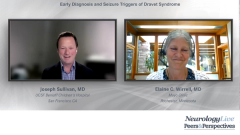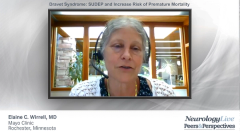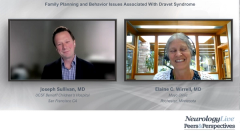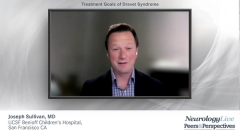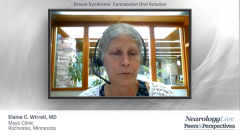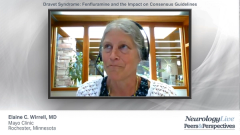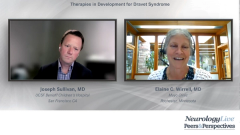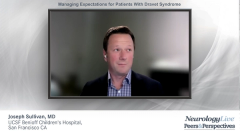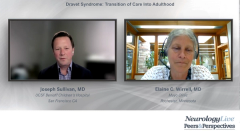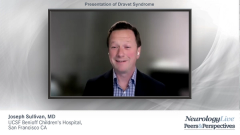
Family Planning and Behavior Issues Associated with Dravet Syndrome
Considerations of genetic testing regarding family planning as well as behavioral issues associated with Dravet syndrome.
Episodes in this series

Joseph Sullivan, MD: On the social media–internet theme, we know that these families are connecting, right? They’re connecting, which is incredibly valuable as a support system, but they’re also able to share stories about some of the nonseizure difficulties that often plague many of these kids and adults. Always sensitive that this is a child with onset epilepsy. We have many adults who do have a diagnosis of Dravet syndrome and may look a little different, but still share a lot of what we call the comorbidities. So what do you think is the most common complaint beyond seizures that our families come to you with related to their Dravet syndrome?
Elaine C. Wirrell, MD: When you look at intellectual disability, that’s not there at onset, but it certainly is something that essentially all persons with Dravet syndrome develop, to a variable degree. I have kids who are mildly cognitively impaired, and I have kids who are more significantly cognitively impaired, so there’s quite a range. Another common thing, and probably more so, is people become adolescents and young adults, have significant behavioral issues and issues with aggression, issues with hyperactivity, issues with anxiety. We still don’t know how best to assess and manage patients for that. In my practice, I partner a lot with my mental health professionals to help deal with that, but that can certainly be very impactful on quality of life. Many kids are described as sleeping poorly, and if you’re not sleeping well, that has impact beyond just you. That has a lot of impact on your caregiver as well, who’s already dealing with the fact that you could have a seizure at any time. So that’s very impactful on quality of life. And then there are gait difficulties, as the crouch gait often times becomes a little more problematic as time goes on.
Joseph Sullivan, MD: I’m almost afraid sometimes to ask the question, because I already know the answer. Sadly, as you said, there aren’t a whole lot of great options to help our kids sleep better. We all know how we feel when we’re sleep deprived, and being a sleep-deprived caregiver that’s taking care of a child with an intellectual disability and having to be on high alert for seizures—you can just imagine the ripple effect it has just on quality of life. That translates to other siblings in the family as well. Even as I say that, I thought of something in terms of the genetics here and how when families hear genetic, they think, did I pass that down? Am I going to have another child with Dravet syndrome? I’m curious what your genetic counseling take is on that is?
Elaine C. Wirrell, MD: It’s really important that all families whose children we suspect have Dravet syndrome do have the genetic testing. When we look at the SC1NA variants that we find. Most of those, about 90%, are going to be de novo, which means that they are new in the child and are not going to be passed down by the parents. About 10% are not, but most are de novo. The other important thing—if the child tests positive and the parent looks as if they might be a negative—is to rule out a germline mutation, because those will significantly increase the risk of having a subsequent child with Dravet syndrome. It’s really important for families to meet with an experienced genetics counselor and an experienced geneticist to have that discussion.
Joseph Sullivan, MD: Absolutely. This germline mosaicism is—there are reports in the literature, there are families that have more than 1 affected family member, even though they tested in their serum as negative.
Elaine C. Wirrell, MD: Correct.
Joseph Sullivan, MD: I know that this 10% number gets thrown around, but there’s been some recent discussion that it might be a little higher, so I couldn’t agree more. Meeting with an experienced genetic counselor, there are lots of options that can be done that are beyond my level of understanding.
Elaine C. Wirrell, MD: And mine.
Joseph Sullivan, MD: In terms of how that risk is assessed, and embryo selection and whatnot, it’s very important to have access to those skilled personnel.
Thank you for watching this Neurology Live® Peers & Perspectives®. If you enjoyed the content, please subscribe to our e-newsletters to receive upcoming programs and other great content in your in-box. Thank you so much.
Transcript Edited for Clarity
Newsletter
Keep your finger on the pulse of neurology—subscribe to NeurologyLive for expert interviews, new data, and breakthrough treatment updates.

